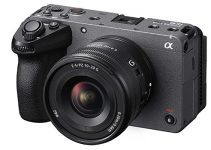The famous Dolly Zoom or Vertigo effect that has been employed extensively in numerous iconic Hollywood classics throughout the last century has become ubiquitous and highly recognizable over time but can one do it without using the conventional method of tracking forward and zooming out or vise verse?
Well, it seems that in the world of 4K acquisition content creators can do wonders in post by using only the advantages of higher resolution. You don’t even need a zoom lens to do the trick. In fact, you will be able to replicate the effect with just a prime lens and a slider, and of course, your favorite 4K mirrorless camera thrown into the mix. Here’s how.
To pull off the technique, first, place the subject in the center of the frame and perform a dolly shot by using your slider. Then import the captured footage in your NLE of choice. For this tutorial, filmmaker Lewis McGreggor utilizes Adobe After Effects CC. However, you can do the trick in every other modern editing platform capable of scaling the size of the imported clips.
Once you place the footage in the timeline, find the start and end points of the track movement and then set your work area around those positions. If you’ve moved the camera forward, you should descale the image using keyframes to control scale and speed at the same time as these both will essentially create the zoom out effect. That way, your subject will move slowly from a middle frame, so it’s preferable to use a thirds grid to keep it in the center by using simple keyframe automation while adjusting the position of the image simultaneously.
As McGreggor reasonably points out, there are some limitations of this technique. For instance, it’s highly recommended to have your subject dead center of the frame since the overall image will be heavily cropped to create the illusion. Plus, you should be using a camera capable of shooting 3K video at the minimum to produce the effect.
Last but not least, you’ll be limited to a 1080p resolution as your final delivery format even if you’re shooting in 4K. Beyond that, you’ll be certainly able to get some decent results in post, and even though these won’t be as good as the practical effect itself, the suggested method could still be a very powerful asset, especially when it’s your only option.
[source: UglyMcGregor]
Disclaimer: As an Amazon Associate partner and participant in B&H and Adorama Affiliate programmes, we earn a small comission from each purchase made through the affiliate links listed above at no additional cost to you.





Very cool. I didn’t expect it to replicate this lens technique so well!